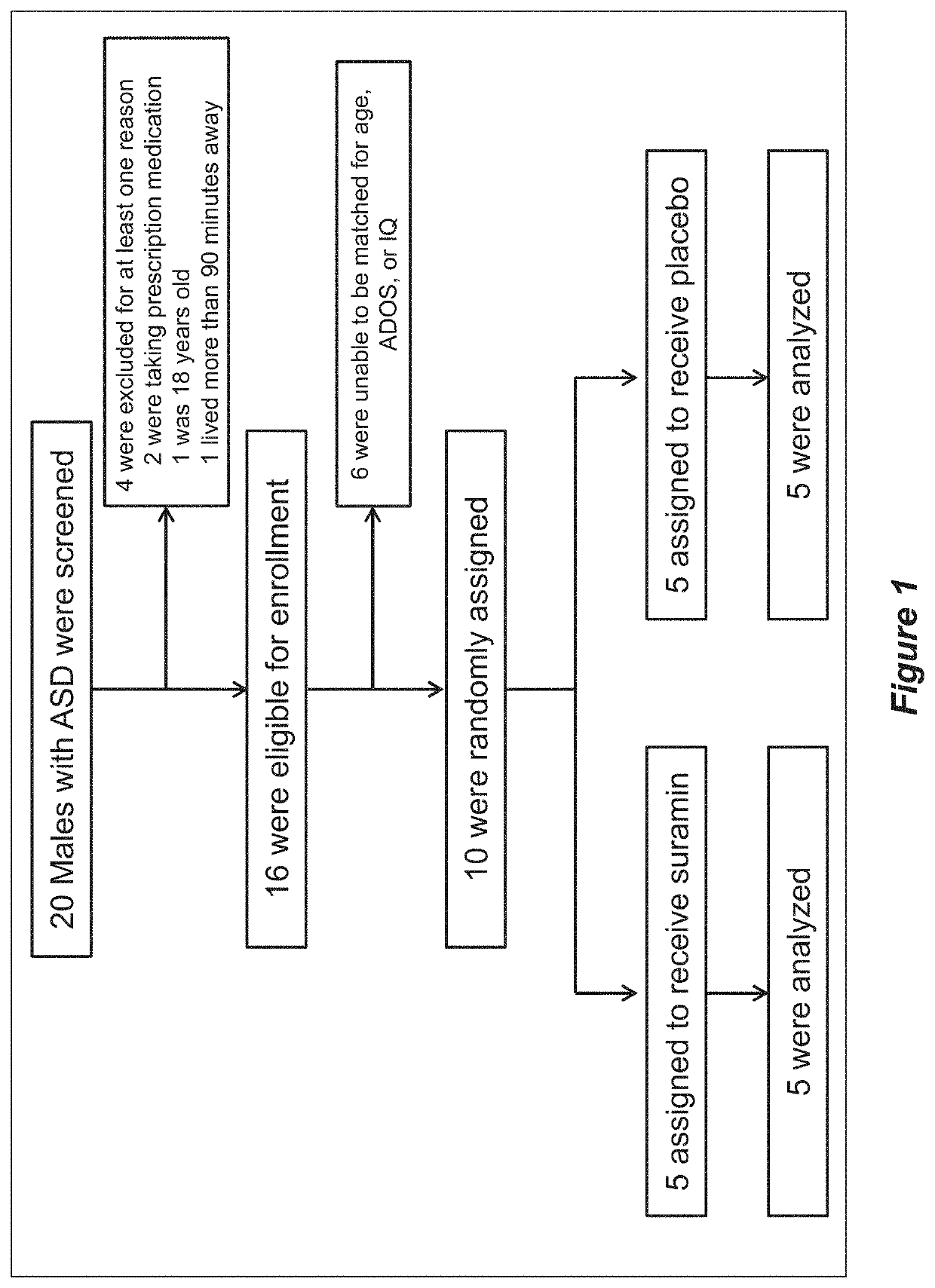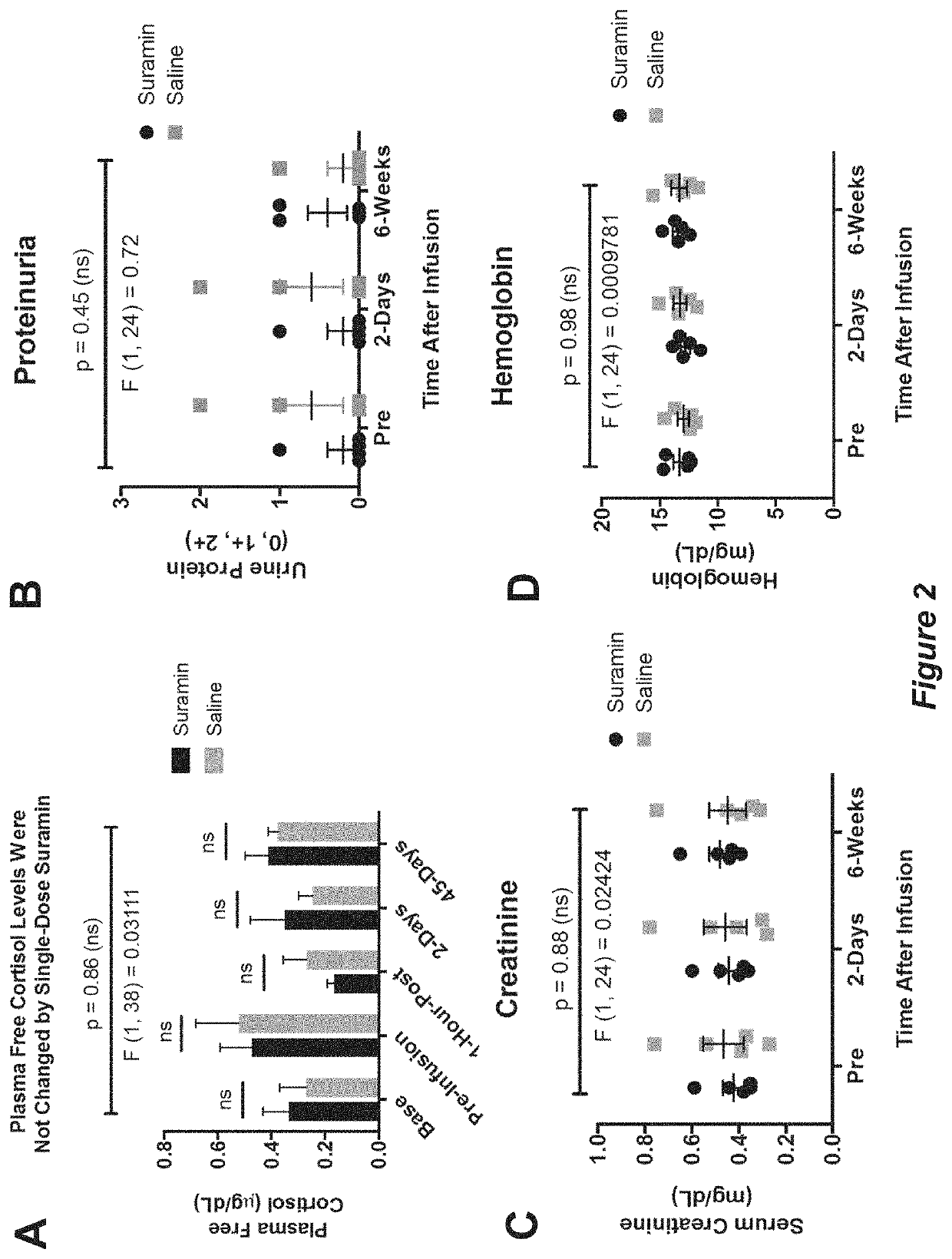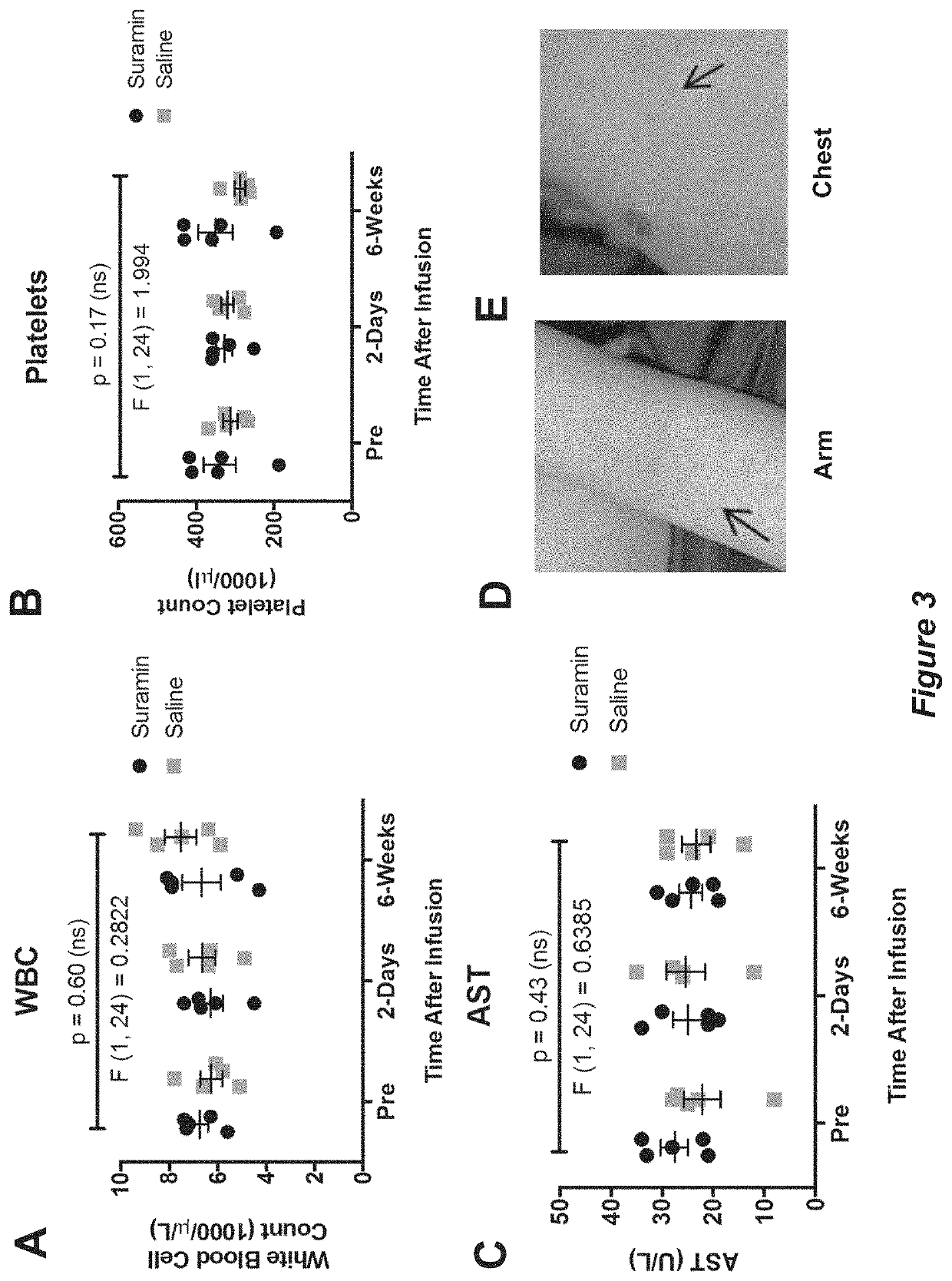Methods for autism spectrum disorder pharmacotherapy
a technology for autism spectrum disorder and pharmacotherapy, which is applied in the field of autism spectrum disorder pharmacotherapy, can solve the problems of no single child, increased asd risk, and lack of molecular understanding and treatment of the diseas
- Summary
- Abstract
- Description
- Claims
- Application Information
AI Technical Summary
Benefits of technology
Problems solved by technology
Method used
Image
Examples
example 1
Phase I / II SAT-1 Trial for Suramin in Autism Spectrum Disorder
Inclusion / Exclusion Criteria:
[0147]All children met DSM-5 diagnostic criteria for autism spectrum disorders, and received confirmatory testing by Autism Diagnostic Observation Schedule, 2nd edition (ADOS-2) examination. Inclusion criteria included males, ages 4-17 years, living in the San Diego, Calif. region, with a confirmed diagnosis of ASD.
[0148]Exclusion criteria included children who weighed less than the 5th percentile for age, took prescription medications, or had laboratory evidence of liver, kidney, heart, or adrenal abnormalities. Children living more than a 90-minute drive from the testing sites in La Jolla, Calif. were excluded to eliminate the possibility of aberrant behaviors resulting from extended car travel. Children with known syndromic forms of ASD caused by DNA mutation or chromosomal copy number variation (CNV) were excluded in this first study. Families were asked not to change their children's ther...
example 2
Safety / Efficacy Analysis for Suramin treatment in Autism
[0156]Each child was used as his own control to examine before and after treatment effects from Example 1 in a paired t-test design for the analysis of the ADOS, EOWPVT, ABC, ATEC, RBQ (FIGS. 4-11 show individual analyses), and blood and urine safety data (FIGS. 2 and 3 show individual analyses). Paired, non-parametric analysis was by Wilcoxon signed-rank sum test. Categorical data, such as the presence or absence of adverse events or historical symptoms was analyzed by Fisher's exact test. Two-way ANOVA (treatment×time), with Sidak post hoc correction, was used to analyze the 6-week summaries captured by the ADOS, CGI, and additional blood and urine safety analysis. Cohen's d—calculated as the mean difference of the paired, within-subject scores before and after treatment, divided by the standard deviation of the differences—was used as an estimate of effect size.
[0157]Extensive monitoring revealed no serious toxicities (CTCAE...
example 3
Suramin Pharmacokinetics in Pediatric Patients
[0161]Suramin concentrations were measured by high performance liquid chromatography and tandem mass spectrometry (LC-MS / MS) on plasma samples collected before the infusion, at 1 hour, 2 days, and 45 days post-infusion for the study described in Example 1.
[0162]Heparinized plasma, 90 μl was prepared for LC-MS / MS analysis. Ten (10) μl of 50 μM stock of trypan blue was added to achieve an internal standard concentration of 5μM. This was incubated at room temperature for 10 min to permit metabolite interaction with binding proteins, then extracted with 4 volumes (400 μl) of pre-chilled methanol-acetonitrile (50:50) to produce a final concentration of 40:40:20 (methanol:acetonitrile:H2O), and precipitated on ice for 10 minutes. The samples were deproteinated and macromolecules removed by precipitation on crushed ice for 10 min.
[0163]The mixture was centrifuged at 16,000g for 10 min at 4° C. and the supernatant was transferred to a new tube a...
PUM
| Property | Measurement | Unit |
|---|---|---|
| molecular weights | aaaaa | aaaaa |
| time | aaaaa | aaaaa |
| pH | aaaaa | aaaaa |
Abstract
Description
Claims
Application Information
 Login to View More
Login to View More - R&D
- Intellectual Property
- Life Sciences
- Materials
- Tech Scout
- Unparalleled Data Quality
- Higher Quality Content
- 60% Fewer Hallucinations
Browse by: Latest US Patents, China's latest patents, Technical Efficacy Thesaurus, Application Domain, Technology Topic, Popular Technical Reports.
© 2025 PatSnap. All rights reserved.Legal|Privacy policy|Modern Slavery Act Transparency Statement|Sitemap|About US| Contact US: help@patsnap.com



